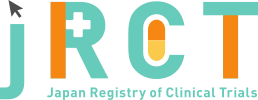臨床研究等提出・公開システム
|
Feb. 15, 2019 |
|
|
Dec. 20, 2022 |
|
|
jRCTs071180018 |
Comparative study of the inhibitory effect on bone erosion progression with Denosumab treatment and conventional treatment in rheumatoid arthritis patients. |
|
Comparative study of the inhibitory effect on bone erosion progression with Denosumab treatment and conventional treatment in rheumatoid arthritis patients. |
|
April. 28, 2021 |
|
46 |
|
In the denosumab treatment group (21 patients) and the conventional treatment group (22 patients), the mean+-SD of age (years) was 65.6+-8.5 and 65.0+-9.2, the percentage of females was 85.7% and 90.9%, the mean+-SD of disease duration (months) was 162.3+-151.3 and 150.5+-129.0, the percentage of patients with anti-CCP antibody was 76.2% and 77.3%, the mean+-SD of anti-CCP antibody (U/mL) was 76.8+-115.2 and 85.4+-108.2, the percentage of patients with rheumatoid factor was 81.0% and 81.8%, the percentage of patients with bone erosion (HR-pQCT 2nd and 3rd metacarpal bones) was 38.1% and 59.1%. |
|
Forty-six patients were enrolled in this study, randomized to Denosumab treatment group (23 patients) and Conventional treatment group (23 patients). In the Denosumab treatment group, 21 patients were included in FAS (Two patients were excluded from FAS because the test was not performed), of which 20 patients were completed and one patient was discontinued (Because there was an offer to discontinue). In the conventional treatment group, 22 patients were included in FAS (One patient was excluded from FAS because the test was not performed), of which 21 patients were completed and one patient was discontinued (Due to adverse event). |
|
[Adverse events] In the safety analysis set, Adverse events that occurred between month 0 and month 12 were 52.2% (12/23) in the Denosumab treatment group (All patients received Denosumab at least one dose) and 56.5% (13/23) in the conventional treatment group. Serious adverse events were 4.3% (1/23, osteoarthritis) in the Denosumab treatment group and 8.7% (2/23, malignant neoplasm of the lung and subdural hematoma) in the conventional treatment continuation group. [Adverse drug reactions] Adverse drug reactions of Denosumab treatment (occurred between month 0 and month 12) were 26.1% (6/23), and hypocalcemia was the most common at 17.4% (4/23). Other, erythematous rash, arthralgia, muscle spasticity, limb pain, malaise and platelet count decrease were observed in one patient (4.3%), respectively. There were no other adverse drug reactions. No serious adverse drug reaction was observed. |
|
[Primary endpoint] The estimate mean (95%CI) change of ER-depth at month 6 from baseline was -0.57 (-1.52, 0.39) in the denosumab-treated group vs -0.22 (-0.97, 0.53) in the conventional treatment continuation group, respectively. The estimated difference in the adjusted mean change in HR-pQCT bone erosion (depth [mm]) from baseline to 6 months after the start of treatment in the denosumab-treated group and the conventional treatment continuation group was -0.35. (95% CI: -1.00, 0.31, P = 0.272). [Secondary evaluation items] The estimate mean (95%CI) change at month 12 from baseline and the estimated difference in the adjusted mean change from baseline to 12 months after the start of treatment in the denosumab-treated group and the conventional treatment continuation group of the depth (mm) , width (mm) and volume(mm3) of HR-pQCT bone erosion in 'the 2nd and 3rd metacarpal bones' and 'wrist joint' are shown below. The 2nd and 3rd metacarpal bones: Depth(mm):-0.56 (-1.41, 0.29),-0.20 (-0.90, 0.49),-0.35(P = 0.225) Width(mm):-0.27 [-1.10, 0.56],-0.03 [-0.70, 0.64],-0.24(P = 0.436) Volume(mm3):-6.25 [-23.94, 11.44],-3.18 [-17.56, 11.20],-3.07(P = 0.598) The wrist joint: Depth(mm):0.02(-0.18, 0.22),-0.07(-0.29, 0.15),0.09(P = 0.447) Width(mm):0.13(-0.09, 0.34),0.32(0.11, 0.52),-0.19(P = 0.131) Volume(mm3):-0.44(-1.04, 0.16),-0.40(-1.01, 0.22),-0.05(P = 0.890) |
|
The aim of this exploratory study was to compare the effects of denosumab in combination with csDMARDs and csDMARDs alone on ER inhibition by HRpQCT in patients receiving csDMARDs for the treatment of RA. The results of the study suggested that the additional administration of denosumab may be effective in inhibiting the progression of bone erosion and improving bone erosion. Adverse drug reactions of Denosumab treatment were observed in 26.1%, and hypocalcemia was the most common in 17.4%, it was feasible. |
|
Dec. 20, 2022 |
|
Dec. 07, 2022 |
|
https://link.springer.com/content/pdf/10.1186/s13075-022-02957-w.pdf |
No |
|
None |
|
https://jrct.mhlw.go.jp/latest-detail/jRCTs071180018 |
Kawakami Atsushi |
||
Nagasaki University Hospital |
||
1-7-1 Sakamoto,Nagasaki-shi, Nagasaki |
||
+81-95-819-7262 |
||
atsushik@nagasaki-u.ac.jp |
||
Iwamoto Naoki |
||
Nagasaki University Hospital |
||
1-7-1 Sakamoto,Nagasaki-shi, Nagasaki |
||
+81-95-819-7262 |
||
naoki-iwa@nagasaki-u.ac.jp |
Complete |
Mar. 20, 2018 |
||
| April. 13, 2018 | ||
| 44 | ||
Interventional |
||
randomized controlled trial |
||
open(masking not used) |
||
active control |
||
parallel assignment |
||
treatment purpose |
||
1) Patients who can be visited hospital diagnosed as rheumatoid arthritis by Rheumatoid arthritis classification criteria of ACR (revised in 1987) or ACR / EULAR (2010) |
||
1) Patients complicated of osteoporosis who have not been treated for osteoporosis |
||
| 20age old over | ||
| No limit | ||
Both |
||
Rheumatoid arthritis |
||
Patients of the group that starts treatment of Denosumab will be treated with Denosumab at the time of visit on Month 0 and Month 6. |
||
Depth change from baseline of bone erosion by HR-pQCT measurement 6 months after starting administration. |
||
1.Depth change from baseline of bone erosion by HR-pQCT measurement 12 months after starting administration. |
||
| Daiichi Sankyo co.,LTD. | |
| Not applicable |
| Certified Review Board, Nagasaki University | |
| 1-7-1 Sakamoto,Nagasaki-shi, Nagasaki, Nagasaki | |
+81-95-819-7905 |
|
| gaibushikin@ml.nagasaki-u.ac.jp | |
| Approval | |
Jan. 25, 2019 |
| UMIN000030575 | |
| University Hospital Medical Information Network Center |
None |
